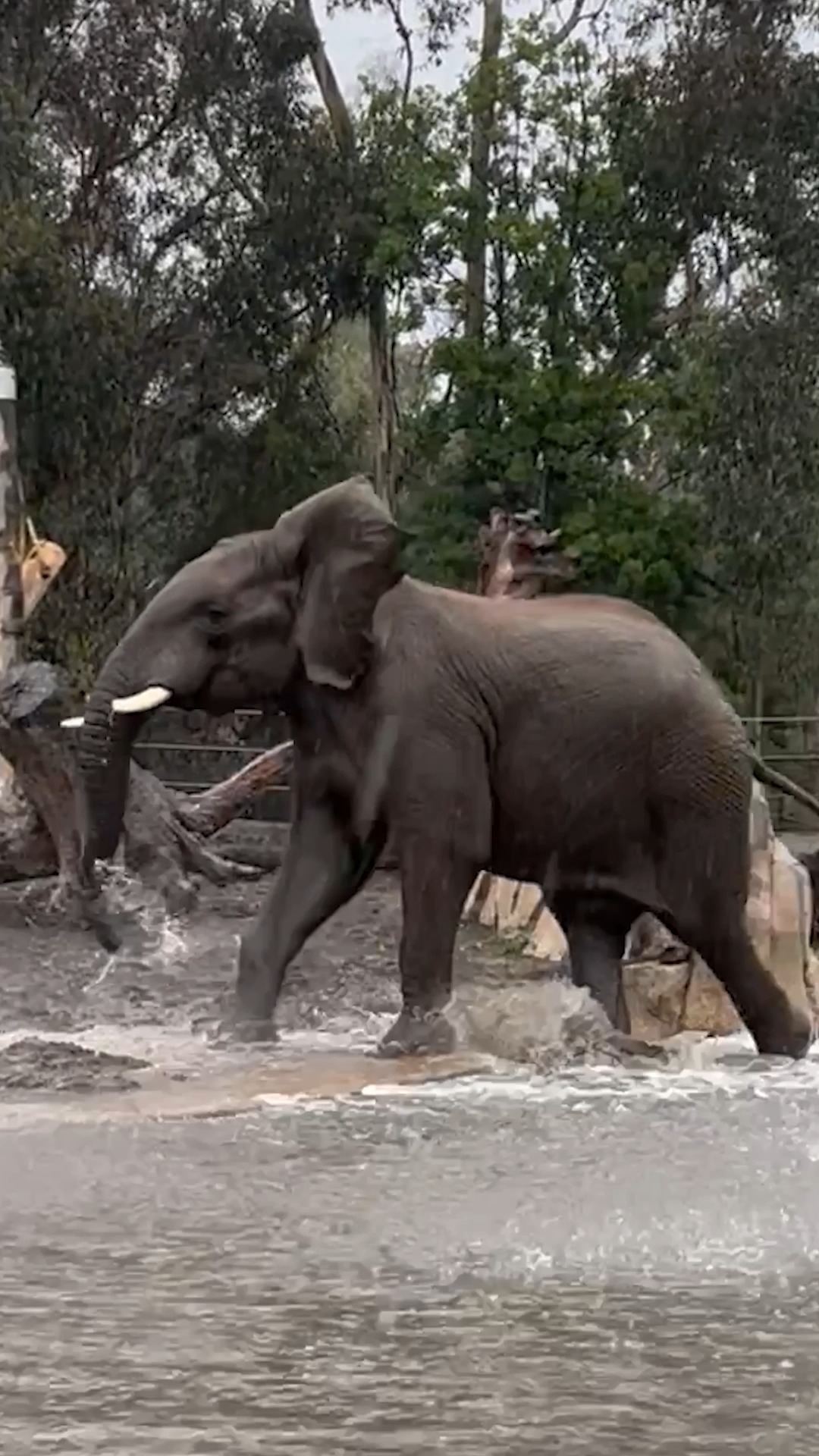- Understanding the importance of environmental enrichment in zoos, particularly through seasonal events such as pachy pool parties during April showers.
- Exploring the behaviors and needs of pachyderms in captivity, including elephants and rhinoceroses, and how creative activities benefit their mental and physical health.
- Discussing the significance of community engagement and outreach facilitated by unique zoo events and social media, with a focus on wildlife conservation and education.
- Examining the role of zoo management in organizing and maintaining seasonal events while addressing the broader goals of animal welfare and sustainability.
- Highlighting scientific and educational aspects of such events for promoting conservation awareness and encouraging responsible environmental stewardship among audiences.
April showers bring pachy pool parties, but their significance goes far beyond simple entertainment. These events embody a key facet of zoo management, offering vital environmental enrichment for pachyderms like elephants and rhinoceroses. Environmental enrichment represents a practice adopted to enhance the quality of life for animals in captivity by providing stimuli that encourage natural behaviors. For pachyderms, water-based activities simulate their natural habitat where access to water is essential not just for drinking but also for cooling and playing. Such initiatives are crucial, particularly in April when weather conditions trigger natural behavioral changes in these animals.
Elephants and rhinoceroses, as representatives of pachyderms, often face challenges in captivity that differ sharply from their counterparts in the wild. In natural environments, these large mammals engage in complex social interactions, forage over vast distances, and enjoy diverse habitats. Enrichment activities such as pachy pool parties aim to replicate elements of these natural occurrences. Activities involving water support their physical health through exercise and promote social bonding as these animals play together. The use of pools during April showers effectively taps into seasonal changes when increased rainfall would naturally lead to more playful and dynamic behavior in their wild environments.
Unique zoo activities like pachy pool parties also provide a bridge between animal care and public engagement, serving as an innovative platform for educational outreach. Zoo visitors who witness such interactive events are more likely to gain a richer understanding of pachyderm behavior and the challenges they face both in captivity and the wild. This educational aspect raises awareness about important conservation issues, emphasizing the importance of protecting these species and their habitats. Engaging communities through in-person events is further amplified through strategic use of social media platforms like Instagram, enabling wider dissemination of conservation messages. The connectivity of digital platforms allows these programs to reach a global audience, promoting international awareness and support for wildlife conservation efforts.
A focus on community engagement is critical as zoos reimagine their role in the modern world. Beyond serving as mere exhibits of exotic species, they are evolving into conservation centers committed to protecting endangered species and educating the public about biodiversity. Events like pachy pool parties are more than seasonal spectacles; they are educational tools designed to inspire community and global awareness of conservation challenges. Each event provides an opportunity to discuss broader topics such as habitat destruction, human-animal conflict, and climate change impacts, fostering a culture of conservation mindfulness.
The management side of organizing pachy pool parties reveals deeper considerations of zoo administration. Ensuring the well-being of animals within these planned activities is a complex task requiring meticulous planning. Zoo staff must consider a variety of factors, including the size and design of the pool, the animals’ psychology, and the potential impacts on their long-term welfare. These considerations align with ethical mandates to provide for the physical and mental well-being of all animals in human care. Coordinated efforts ensure these events are not merely for public enjoyment but serve the animals’ natural inclinations and health requirements.
Moreover, these activities align with sustainability goals, reinforcing a zoo’s commitment to environmental conservation. Reducing the ecological footprint of these events involves selecting sustainable materials for decorations or implements and ensuring responsible water use. By prioritizing sustainability, zoos can demonstrate their commitment to not only animal welfare but also to protecting the planet’s resources.
Finally, the scientific and educational merit of pachy pool parties cannot be overstated. Such events provide a platform for discussing conservation science, highlighting the impacts of poaching and habitat loss, and advocating for protective measures. As educational events, they offer an interactive experience that can plant seeds of curiosity and concern, particularly in young minds. By fostering an early appreciation for wildlife, these events help nurture future generations of conservationists. Engaging scientific content, delivered in accessible formats, ensures visitors leave with not just memories but a more informed perspective on the necessity for preserving biodiversity.
April showers usher in the promise of pachy pool parties, granting zoos an inventive mechanism to enhance animal welfare while engaging and educating the public. These seasonal activities underscore an institution’s multifaceted role as an arbiter of animal care, conservation, education, and sustainable practice. As such gatherings grow in popularity, their potential to effect positive change for pachyderms and the planet continues to swell, like the waters that inspire play among these gentle giants.
*****
Source Description
April showers bring pachy pool parties ☂️


